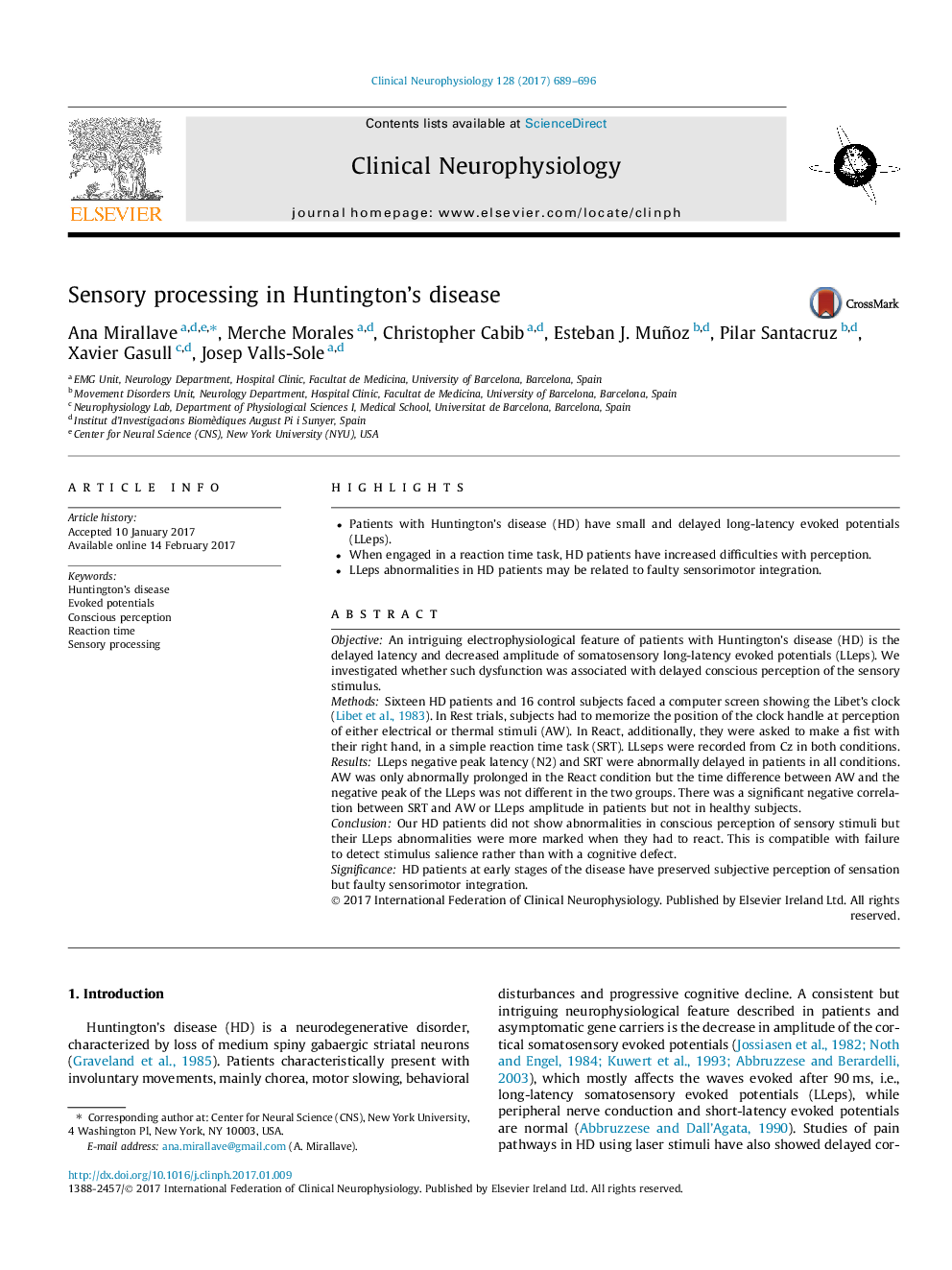| Article ID | Journal | Published Year | Pages | File Type |
|---|---|---|---|---|
| 5627670 | Clinical Neurophysiology | 2017 | 8 Pages |
â¢Patients with Huntington's disease (HD) have small and delayed long-latency evoked potentials (LLeps).â¢When engaged in a reaction time task, HD patients have increased difficulties with perception.â¢LLeps abnormalities in HD patients may be related to faulty sensorimotor integration.
ObjectiveAn intriguing electrophysiological feature of patients with Huntington's disease (HD) is the delayed latency and decreased amplitude of somatosensory long-latency evoked potentials (LLeps). We investigated whether such dysfunction was associated with delayed conscious perception of the sensory stimulus.MethodsSixteen HD patients and 16 control subjects faced a computer screen showing the Libet's clock (Libet et al., 1983). In Rest trials, subjects had to memorize the position of the clock handle at perception of either electrical or thermal stimuli (AW). In React, additionally, they were asked to make a fist with their right hand, in a simple reaction time task (SRT). LLseps were recorded from Cz in both conditions.ResultsLLeps negative peak latency (N2) and SRT were abnormally delayed in patients in all conditions. AW was only abnormally prolonged in the React condition but the time difference between AW and the negative peak of the LLeps was not different in the two groups. There was a significant negative correlation between SRT and AW or LLeps amplitude in patients but not in healthy subjects.ConclusionOur HD patients did not show abnormalities in conscious perception of sensory stimuli but their LLeps abnormalities were more marked when they had to react. This is compatible with failure to detect stimulus salience rather than with a cognitive defect.SignificanceHD patients at early stages of the disease have preserved subjective perception of sensation but faulty sensorimotor integration.
